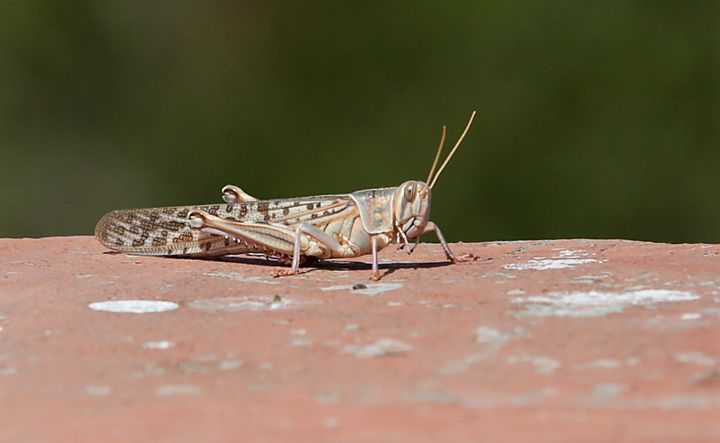
As locusts affect more states in India, the government has stepped up efforts to control the spread. Locust swarms entered India through Rajasthan on 11 April and have already affected Gujarat, Maharashtra, Uttar Pradesh and Madhya Pradesh.
About 21 districts in Rajasthan, 18 districts in Madhya Pradesh, 2 districts in Gujarat and 1 district in Punjab have undertaken locust control measuresso far, the Union Agriculture ministry said in a statement, according to PTI.
The government has placed an order to buy 60 spraying machines from UK-based company Micron, and two firms have been finalised for supply of drones for aerial spraying of insecticides for effective control over tall trees and inaccessible areas, it added, PTI reported.
The Times of India accessed an internal note of agriculture ministry which said 15 sprayers from UK will arrive in India by 11 June and 20 more by 25 June. The remaining sprayers will come by 9 July.
The ministry also said that 89 fire brigades for pesticide spray, 120 survey vehicles, 47 control vehicles with spray equipment and 810 tractor-mounted sprayers have been deployed for locust control, according to Hindustan Times.
The ministry said it has received permission from Civil Aviation Ministry for use of drones for locust control.
“Two firms have been finalised through tender for use of drones for spray of pesticides for locust control,” it added. Currently, the Locust Control Offices have 21 Micronair and 26 Ulvamast spray machines which are being used for locust control.
UN’s Food and Agriculture Organisation (FAO) in its update on Wednesday said that swarms that arrived in Rajasthan from the west continued to move east in the eastern portion of the state and to the central states of Madhya Pradesh and Maharashtra.
“As of 26 May, at least one swarm had reached to the northeast of Bhopal. Much of these movements were associated with strong westerly winds from Cyclone Amphan in the Bay of Bengal,” it added. FAO also said several successive waves of invasions can be expected until July in Rajasthan.
How states are affected
While earlier reports said the locusts could move towards Delhi if wind conditions are favourable, an official from LCO told Business Today that South Eastern direction of the wind has taken the locust swarms towards Madhya Pradesh.
Delhi government, however, issued an advisory on Thursday with a list of measures to prevent “probable attack” of locusts. The measures include organising awareness programmes for general public and farmers.
“As the swarm usually fly in the day time and rest during night time therefore, the locusts should not be allowed to rest especially during night,” it read.
Bhandara has become the fourth district in Maharashtra to be affected by locusts, according to Hindustan Times. Swarms of locusts that had entered Katol and Parseoni in Nagpur might move towards Ramtek city, a senior agriculture department official told NDTV and added that it is difficult to predict their exact flying course.
A swarm of locusts also reached Uttar Pradesh’s Jhansi district on Wednesday. Locusts had struck the district last week as well, but authorities said they eliminated half of that swarm with the help of local people, PTI reported.
Uttar Pradesh Chief Minister Yogi Adityanath has directed district magistrates of districts bordering other states to take appropriate measures to deal with the menace.
Instructions were issued to DMs of Jhansi, Lalitpur, Agra, Mathura, Shamli, Muzaffarnagar, Baghpat, Mahoba, Banda, Chitrakoot, Jalaun, Etawah and Kanpur Dehat.
For the latest news and more, follow HuffPost India on Twitter, Facebook, and subscribe to our newsletter.
A LWO official told PTI that locusts were earlier confined to Rajasthan and Gujarat. “Since the insects are not finding enough food to survive, they are moving to other areas with the help of strong winds,” the official added.
According to the Indian Council of Agricultural Research Director General Trilochan Mohapatra, the insects have attacked about 40,000 hectares of land.
But there is no impact on rabi crops like wheat, pulses and oilseeds as most of them are harvested by now.
“The focus now is to stop the outbreak prior to arrival of monsoon rainfall in June-July when locusts will mature and breed. If the infestation is not controlled, it will pose a threat to kharif crops,” he said.
The FAO said a desert locust adult can consume roughly its own weight in fresh food per day, that is about two grams every day.
Experts have warned that the locusts must be controlled in the next couple of weeks to ensure that swarms do not end up devouring summer crops.
“Despite the unprecedented scale of the locust attack, we haven’t seen any major crop loss, but we’ve got a very short window to tackle the problem. Otherwise, we won’t be able to save our summer crops,” Bhagirath Choudhary, director of the South Asia Biotech Centre, told Reuters.
(With PTI and Reuters inputs)